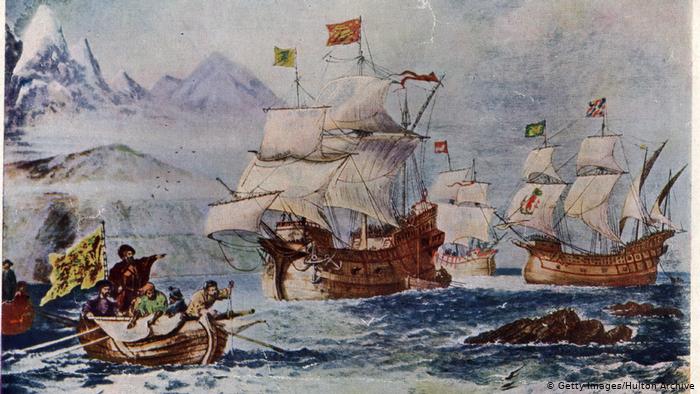
500 Years of Christianity (Part 1)
Spain and Portugal were the world’s greater nations during the 15th and 16th century. They fought many times over newly discovered lands. In 1497, the Pope intervened and divided the world thus: Spain: North and South America (except Brazil) and Portugal: Africa, India, Indonesia (treaty of Tordesillas). On July 8, 1497, Vasco da Gama’s 4 ships left to explore the areas given to Portugal in the Tordesillas treaty; reached Africa, India and Indonesia’s Spices Islands (the Mollucas Islands, 900 miles from Mindanao). He returned laden with spices. Portugal became the richest nation in the world because it was the only supplier of spice to Europe. No other nation could use the Western route to Mollucas/Spice Islands, except Portugal.
Ferdinand Magellan (Fernando de Magallanes) was a Portuguese nobleman and ship official who traveled to the Spice Islands many times. He asked the Portuguese King to finance his business venture of going to Spice Islands but was rejected. He then gave the same proposal to Spain’s King Charles who accepted. The known sea route was through the west beginning in Portugal, Atlantic Ocean, round Africa’s Cape of Good Hope, Middle East, India and Indonesia’s Spice Islands. Magellan’s secret plan was to go to the opposite unknown, undiscovered, east route. He believed that at the tip of South America was a strait or passage and which by turning East, he can reach the Spice Islands.
On May 20, 1519, his five (5) ships left Spain, crossed the Atlantic Ocean, traversed South America until he did reach and crossed the strait at the tip of South America (now called Magellan strait) and entered the peaceful calm ocean which he named Pacifico or Pacific. He crossed it, reached the Marianas Islands which he named Islas de Ladrones (Island of Thieves) because the local people stole some of their equipment. On March 16, 1521, the ships sighted Samar and landed in Homonhon, Guiuan, Eastern Samar on March 17.
Father Pedro de Valderrama celebrated the first Mass in Southeast Asia on March 31, 1521, Easter Sunday, along the shores of what Antonio Pigafetta called Mazawa (Limasawa). They then went to Cebu where Rajah Humabon and his wife plus 800 other villagers were baptized. They gave the Rajah’s family an image of the Ecce Homo, Birhen sa Cota sa Sugbo, and Sto. Niño statue. In a dispute between 2 Mactan Datus, Magellan offered to attack Lapu-lapu to show white man’s battle skills. Magellan was killed so the new leader Sebastian Elcano, hurriedly left. Instead of using the Eastern route (Pacific Ocean, Magellan strait, South America, Atlantic Ocean), Elcano pushed on until he did reach the spice Islands. He then used the Portuguese West route of Indonesia, India, Middle East, Africa’s Cape of Good Hope and reached Spain’s San Lucas de Barrameda Port, on September 6, 1522. Victoria was the first to travel around the world.
Spanish explorer Ruy Villalobos, using the west Portuguese route, reached the Spice Islands and went to Mindanao. He then named a nearby island across the Surigao strait (Leyte) as Filipinas, in honor of Spain’s King Felipe. Later, Europe mapmakers called the entire archipelagos Filipinas. 44 years after Magellan’s death, April 27, 1521, Miguel Legaspi returned to Cebu on April 27, 1565. On May 8 of the same year, they found a well preserved Sto. Niño statue in one of the village houses. On August 20, 1571, the image of Ecce Homo was found in the grave of Rajah Humabon while the image of the Birhen sa Cota sa Sugbo was found floating in a well in Fort San Pedro, sometime between 1572-75.


No Comments